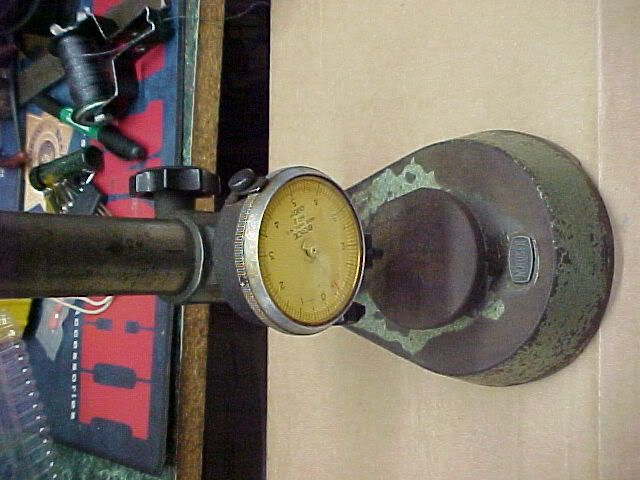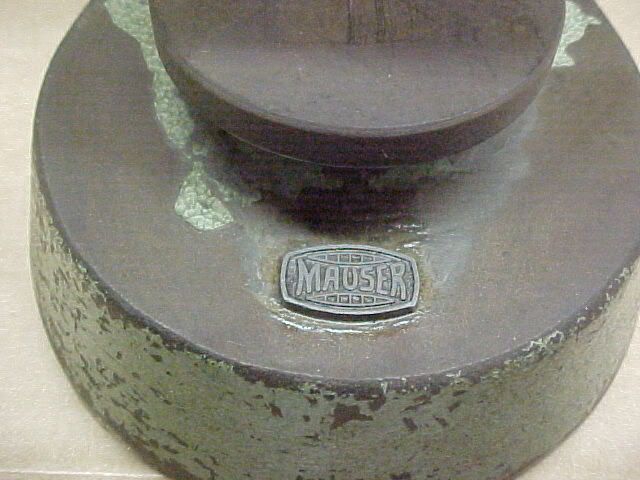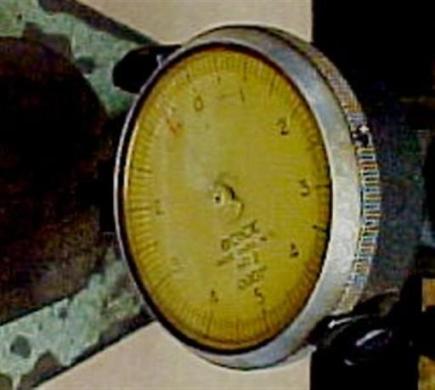
upload photo | donate | calendar
 |
my profile |
register |
faq |
search upload photo | donate | calendar |
|
|
#1 |
|
User
Join Date: Sep 2005
Location: east tn
Posts: 526
Thanks: 5
Thanked 12 Times in 5 Posts
|
I could not resist buying this off another forum,anyone know what mauser had to do with it. Thanks clint
 
__________________
Men Accustomed unto thier arms and their liberties will never endure the yoke. James Harrington 1776 |
|
|

|
|
|
#2 |
|
User
Join Date: Feb 2004
Location: Orygun
Posts: 4,243
Thanks: 118
Thanked 245 Times in 150 Posts
|
Clint,
Not sure what it is. Some sort of gauge, obviously. Mauser made alot of machine tools as well as guns. Ron
__________________
I Still Need DWM side plate #49... if anyone runs across a nice one. What ~Rudyard Kipling~ said... |
|
|

|
|
|
#3 |
|
User
Join Date: Jun 2002
Location: The USA
Posts: 5,919
Thanks: 0
Thanked 6 Times in 4 Posts
|
Is the tip of the measuring gauge "spring loaded" ???
|
|
|

|
|
|
#4 |
|
User
Join Date: Jun 2002
Location: The USA
Posts: 5,919
Thanks: 0
Thanked 6 Times in 4 Posts
|
Is the tip of the measuring gauge "spring loaded" ??? And does it move both up and down ??
If so, it might be a "flatness uniformity" checking device...especially if it measures along both sides of the "zero" on the guage... It looks like the gauge reads 1-5 along the right side of "zero" and also 1-5 along the left side... |
|
|

|
|
|
#5 |
|
User
Join Date: Sep 2005
Location: east tn
Posts: 526
Thanks: 5
Thanked 12 Times in 5 Posts
|
Pete
It is some kind of hight measuring device,probably a bench model for a QC inspector of some type of parts if I were just guessing.
__________________
Men Accustomed unto thier arms and their liberties will never endure the yoke. James Harrington 1776 |
|
|

|
|
|
#6 |
|
User
Join Date: Jun 2002
Location: The USA
Posts: 5,919
Thanks: 0
Thanked 6 Times in 4 Posts
|
Hi Clint,
Yep...I think we are saying the same thing. I think I was just too brief. In a flatness uniformity test (as I WAG'd) a part is placed on the flat, round base of this device. Then the measuring gauge is raised/lowered over the part until the "needle" of the gauge just makes contact with the parting being tested. The gauge is then "zero'd". Then the part is moved around on the base under the needle which is spring-loaded. As high and low spots on the test part are discovered by moving the part around, the gauge dial will read "positive" and negative...indicating which portions of the test part are low and which portions of the test part are high. If the test part were truly and uniformly flat, the gauge dial would continue to only read "zero" across its entire surface. Here is a close up of the gauge on your rig :  The new test stuff is non-contact based with lasers used for measurements and the base (along with the test part) is moved by computer/robotics controls. Here is a newer version : 
|
|
|

|
|
|
#7 |
|
User
Join Date: Nov 2006
Location: Texas
Posts: 784
Thanks: 0
Thanked 3 Times in 3 Posts
|
Seems like the ideal object for an outrageous story and some good fun.
__________________
A heroin habit would be cheaper. |
|
|

|
|
|
#8 |
|
User
Join Date: Jul 2007
Location: Vienna/Austria/Europe
Posts: 36
Thanks: 0
Thanked 0 Times in 0 Posts
|
Thats an normaly plan table, you can also insert an other indicating caliper. We use the same one in our company only a litle bit newer. We use an Mitutoyo.
Do you know the unit on the indicating caliper? I think it can be used for measurements in the height in the area of 1/1000 mm. |
|
|

|
 |
|
|